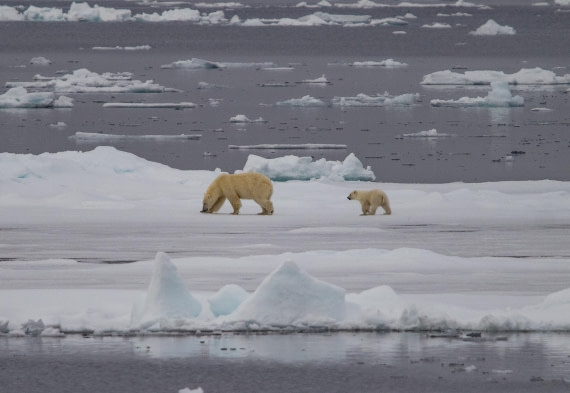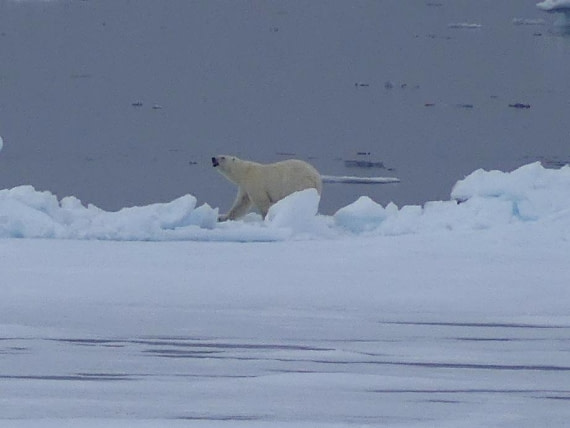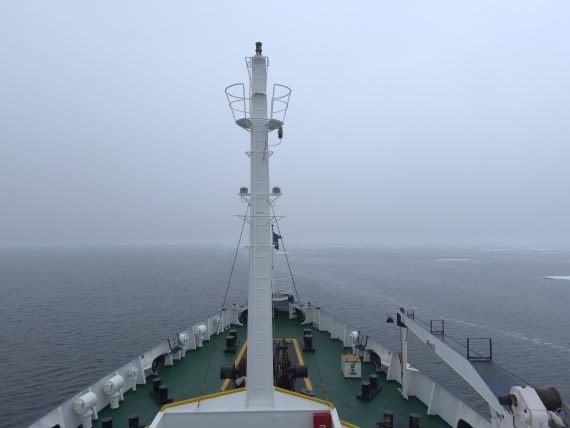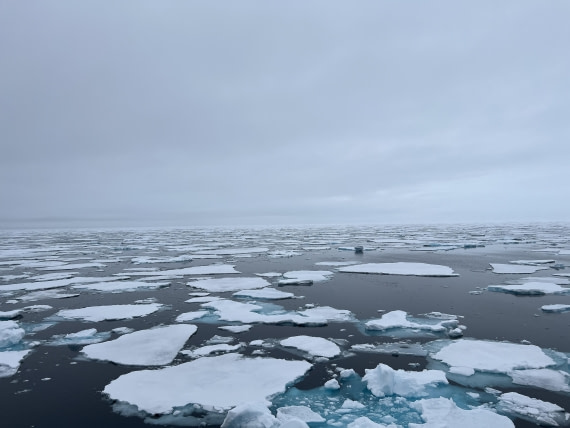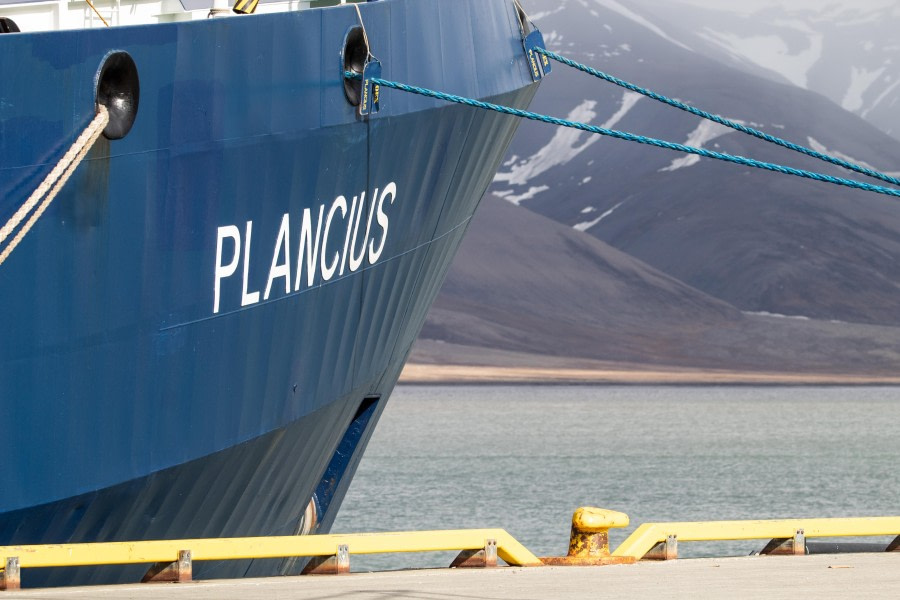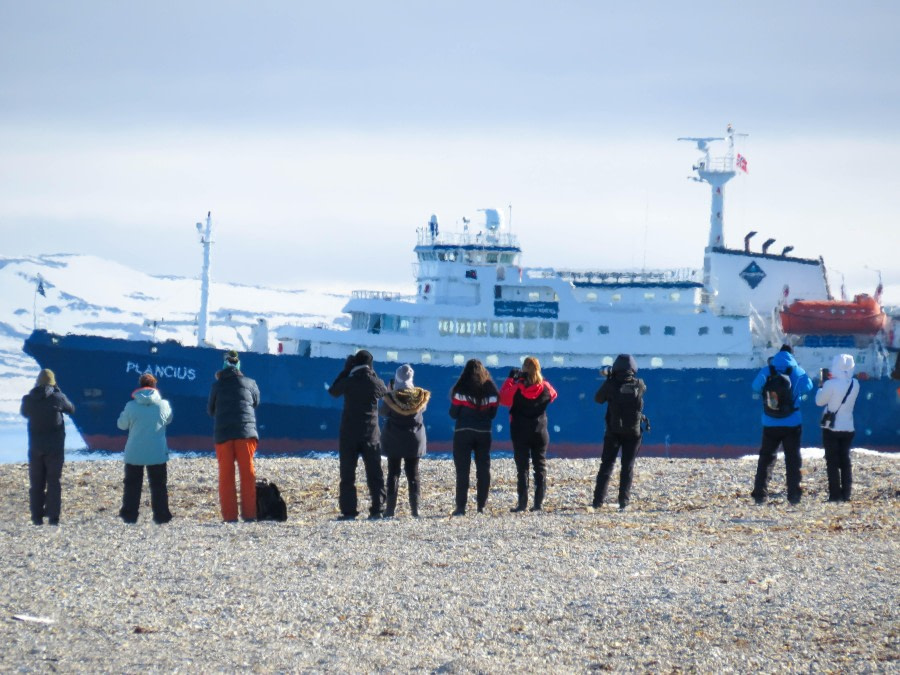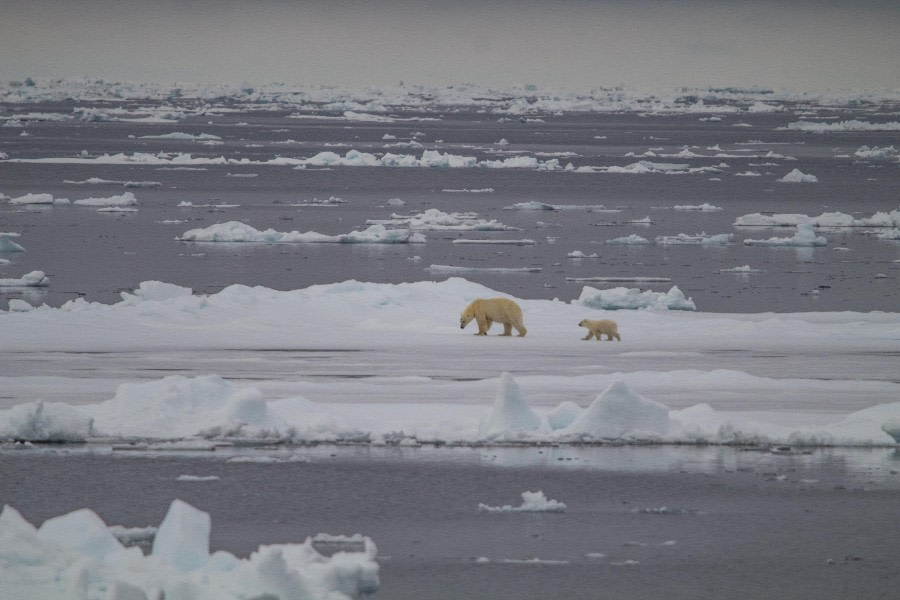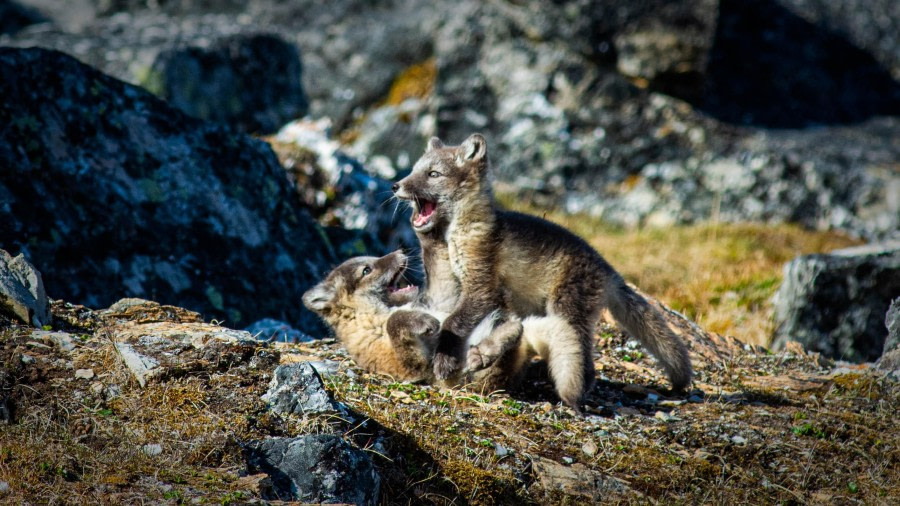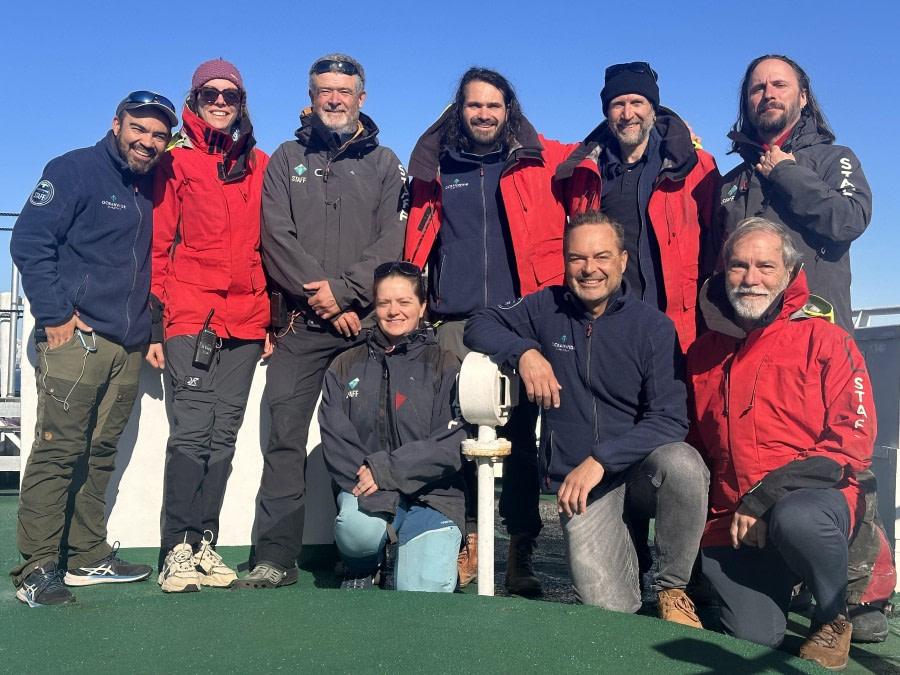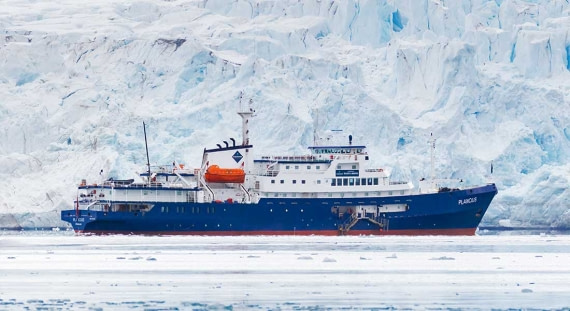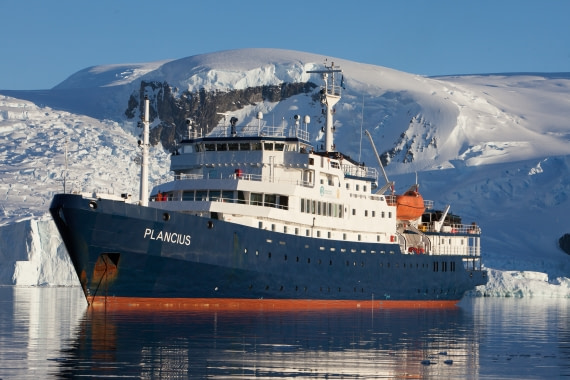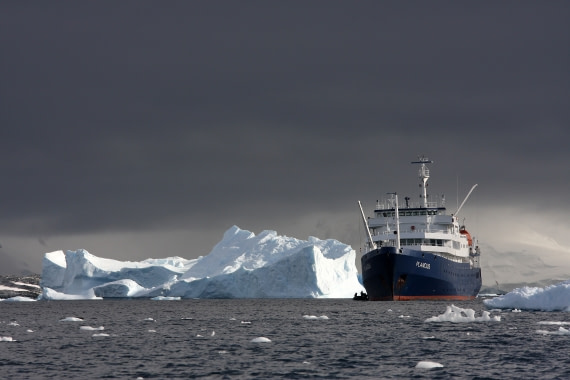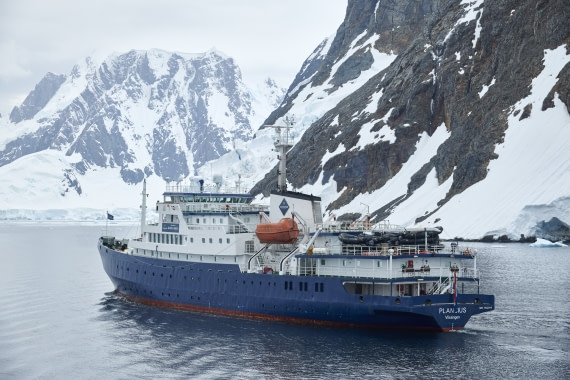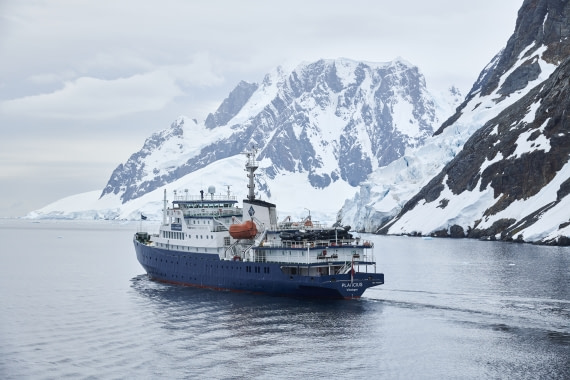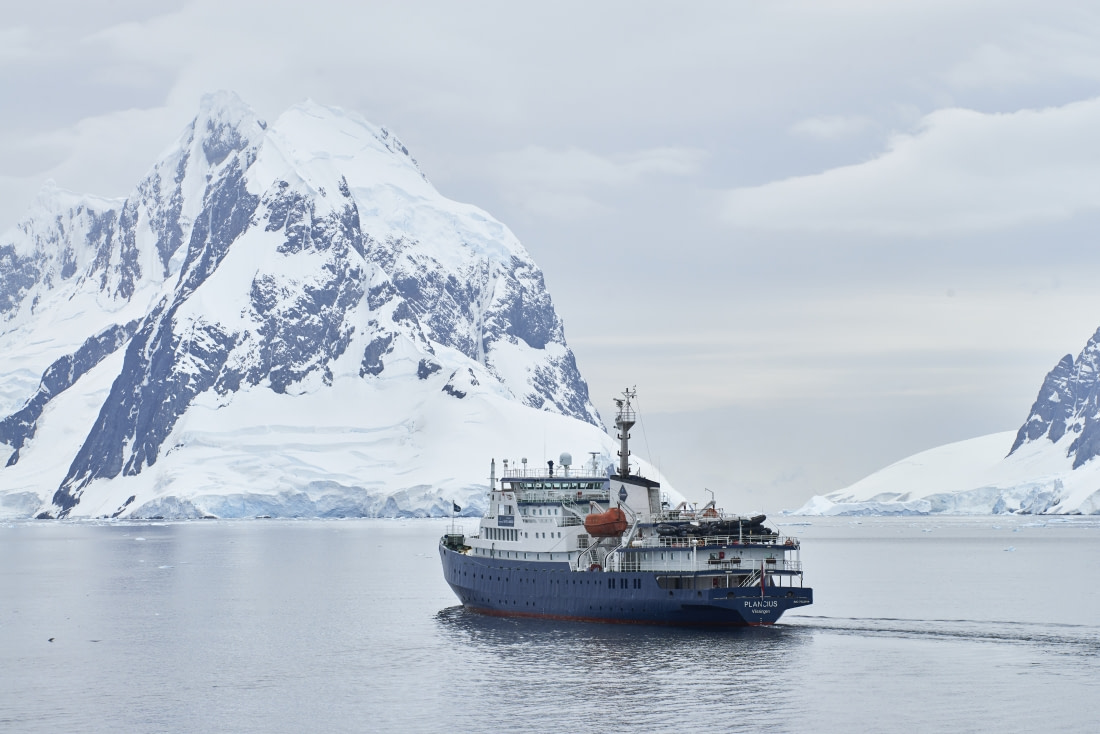| Datum: |
14.06.2024 |
| Position: |
79°49.5'N / 011°54.6'E |
| Wind: |
NW3 |
| Wetter: |
Bedeckt |
| Lufttemperatur: |
+2 |
Wir genossen und schätzten die ruhige Fahrt während der Nacht. Die meisten von uns hatten noch nie eine Nacht an Bord eines Schiffes verbracht, und deshalb hatten zumindest einige von uns Angst, seekrank zu werden oder ähnliches.
In der Nacht segelten wir nach Norden und folgten der Westküste. Wir wachten in der nordwestlichen Ecke der Hauptinsel des Archipels auf und näherten uns einer engen Passage, genannt Sorgatted, zwischen Spitzbergen und Danskøya. Die Küstenlinie und die Form der Berge waren völlig anders als in der Umgebung von Longyearbyen, nicht mehr flach, sondern spitz zulaufend. Als wir uns der Passage näherten, wurde ein Eisbär gesichtet und plötzlich war das ganze Schiff wach, einige von uns lagen zu diesem Zeitpunkt noch im Bett, weil es noch nicht Frühstückszeit war. Der Bär lief an einem Berghang entlang und war ziemlich schwer auszumachen, aber den meisten von uns gelang es, ihn mit Hilfe eines Fernglases zu sehen. Es war großartig zu sehen, wie er in einem langsamen Tempo weiterlief, wahrscheinlich auf der Suche nach etwas Essbarem. Später fuhr er in den Magdalenefjord ein, und wir fuhren weiter, mit dem Ziel Sorgatted.
Die Passage war recht eng, so dass man Details der Küstenlinie, wie eine kleine Hütte und andere Landmarken, gut erkennen konnte. Wir fuhren in den Smeerenburgfjord ein, benannt nach der Walfangstation Smeerenburg auf Amsterdamøya. Plötzlich fanden wir uns umgeben von mehreren Gletschern, kleinen Buchten und spitzen Bergen - eine wunderschöne Landschaft. Wir genossen es, auf den Außendecks zu sein und zu versuchen, die Umgebung in Bildern festzuhalten. Während der Fahrt gelang es unseren Expeditionsmitarbeitern, die im Aufspüren von Bären geübt sind, erneut, einen Eisbären zu entdecken, diesmal hoch oben auf einer Moräne. Obwohl er schwer zu sehen war, gelang es einigen, das Fernrohr zu benutzen. Der Bär, wahrscheinlich ein Weibchen mit einem Jungtier, war überhaupt nicht aktiv und ruhte sich nur aus.
Nach einem guten Frühstück setzten wir unsere Fahrt im Smeerenburgfjord fort und fuhren in den Bjørnfjord mit dem riesigen Smeerenburgbreen ein. Wir verbrachten eine schöne Zeit damit, die spektakuläre Landschaft zu genießen, mit vielen wilden Tieren um uns herum, Walrossen und Prachteiderenten, um nur die ganz besonderen zu nennen.
Später am Morgen versammelten wir uns in der Lounge zu unserer letzten obligatorischen Besprechung. Wir lernten etwas über den Betrieb von Zodiacs und wie man sich im Land der Eisbären verhält. Wir segelten aus dem Fjord hinaus und fuhren zwischen den vielen Inseln der nordwestlichen Ecke Spitzbergens hindurch in den Raudfjord hinein. Da es keine große Strecke war, die Plancius zurücklegen musste, warfen wir kurz nach dem Mittagessen in Hamiltonbukta den Anker.
Nach einer ausgiebigen Mittagspause bot uns unser Expeditionsteam eine Zodiacfahrt in dieser wunderschönen Bucht an. Es gab viel zu sehen, einen Gletscher, kleine Inseln mit brütenden Gänsen und eine steile Klippe, die Tausende von Trottellummen und Dreizehenmöwen beherbergte. Wir alle erkundeten das Gebiet und kehrten schließlich zum Vogelfelsen zurück, wo ein Polarfuchs nach Nahrung suchte. Er war ziemlich schwer auszumachen, weil er gut getarnt war und kein weißes Fell, sondern ein braunes Sommerfell hatte. Es war nicht nur die Landschaft, sondern auch die Geräusche an diesem Ort, die besonders waren.
Wir wären alle gerne geblieben, aber unser Expeditionsteam hatte für heute noch eine weitere Aktivität geplant, nämlich eine Schiffsrundfahrt im südlichen Teil des Raudfjords. Während der Fahrt klarte der Himmel auf und es herrschte strahlender Sonnenschein und Windstille. Die Plancius segelte nach Süden, während viele erfahrene Augen in alle möglichen Richtungen Ausschau hielten. Sie entdeckten einen weiteren Eisbären, der diesmal am Ufer entlanglief. Mit ein wenig Hilfe gelang es uns allen, die richtige Stelle zu finden. Das Licht war perfekt und das Schiff stabil, und wir alle beobachteten, wie es in eine Bucht einfuhr und außer Sichtweite verschwand.
Wir setzten unsere Fahrt in Richtung Raudfjordbreen fort. Die Landschaft sah aus wie eine Zeitschriftenwerbung für Spitzbergen, blauer Himmel, kein Wind, weißer Schnee und ein riesiger Gletscher. Es war auch der Futterplatz für viele Vogelarten, darunter Dreizehenmöwen und Trottellummen, um nur zwei zu nennen. Es war ein großartiger Abend, und aus diesem Grund wurde die Zusammenfassung zweimal verschoben, da es viel zu schön war, um ins Haus zu gehen. Schließlich bot Jan nach dem Abendessen eine Zusammenfassung an, und wir erfuhren die Pläne für morgen.
In den späten Abendstunden verließen wir den Raudfjord in Richtung unserer nächsten Abenteuer.

